If you've ever heard of Saturn's moon Mimas, chances are you're aware of its resemblance to the famous Imperial space station in the Star Wars franchise, but you may not be aware that this moon has an ocean.
Mimas's most prominent feature is without a doubt the huge crater Herschel Crater, which looks remarkably like the circular indentation on the fictional Death Star.
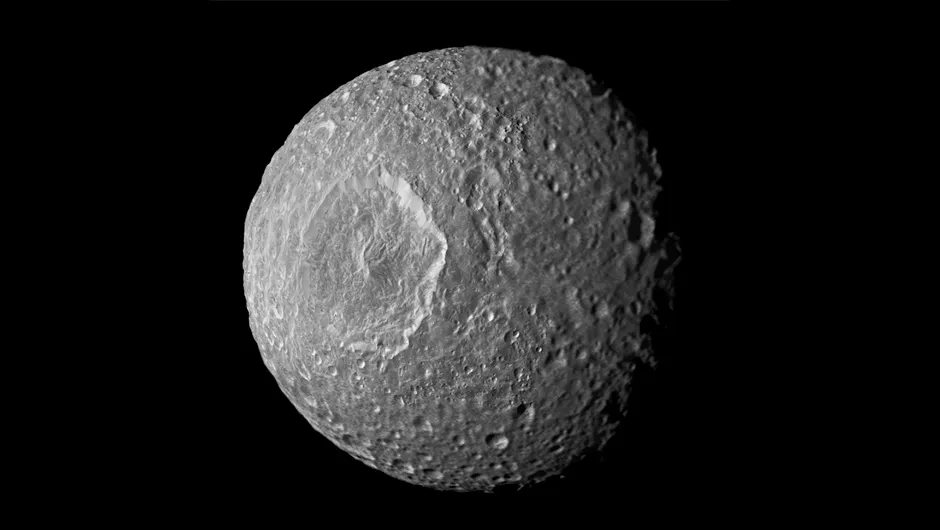
Saturn is often known as the 'king of the moons' because it's the planet with the most moons in the Solar System.
Mimas is a small moon of Saturn; the smallest of the so-called mid-sized icy moons – 394km (246 miles) in diameter.
In February 2024, a team of astronomers published a paper announcing the discovery of a large global subsurface ocean on moon Mimas.
Valéry Lainey is an astronomer based at the Observatoire de Paris who works on the motions of celestial objects in the Solar System, and led the team behind the discovery.
We got the chance to speak to Lainey about Mimas the ocean moon and what the discovery could mean for the search for signs of life beyond Earth.

What is the relationship between Saturn and Mimas?
Mimas is big enough to have a roughly spherical shape because of gravity, but it’s probably one of the smallest objects that can.
If it were half the size, it would look more like an asteroid. The effect of gravity also means it has a rocky core and an ice shell.
Mimas significantly influences the rings of Saturn, contributing greatly in preventing their expansion.
If you look at Saturn’s rings, there are large gaps between them.
The biggest such gap, 4,000–5,000km (2,485–3,106 miles) wide, is called the Cassini division, and the existence and maintenance of this division is due to Mimas’s gravity.
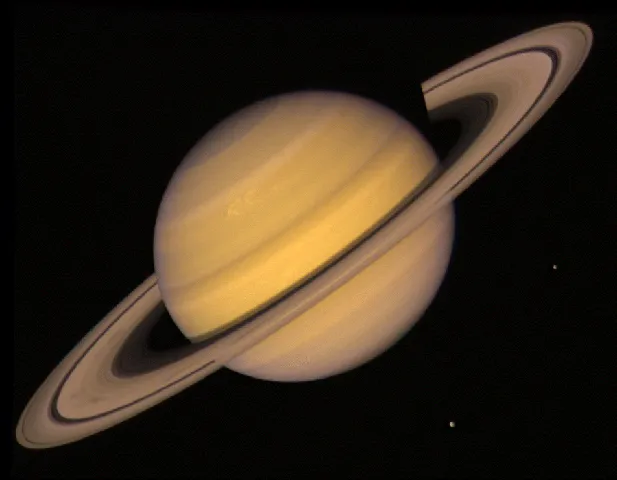
What did your team discover?
We discovered something at Mimas that nobody believed possible: a global ocean under the surface of the moon.
The icy shell is typically 20–30km (12.4–18.6 miles) thick. This was extremely unexpected.
Firstly, the surface doesn’t look as though Mimas has any internal activity; there’s no resurfacing.
If you have a global ocean for a long time – as on Mimas, where more than 50% of the volume is liquid water – you expect some material to eventually come up to the surface.
You’d expect surface faults and possible geyser activity which should fill any craters to create a smooth plain, like on Enceladus.
Which is not the case at all with Mimas. This suggests the moon's ocean is very young.
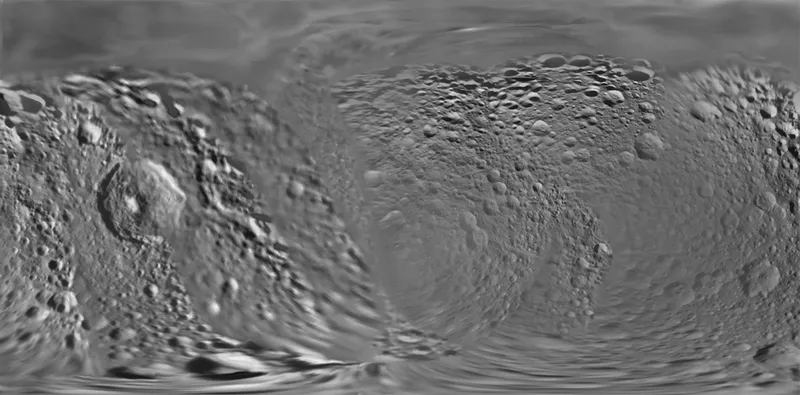
How did you discover the ocean?
We found that, when monitoring the rotation of Mimas, there were small wobbles or oscillations.
These were expected, but one of them was much larger than we predicted. We decided to investigate what was causing this large oscillation.
Two scenarios were possible: one was that the rocky core of Mimas was elongated like a cigar, the other possibility was a global ocean on the moon.
To discriminate between the two scenarios, we looked at the drift in Mimas’s orbit, which was around 10km (6.2 miles) over the 13 years of the Cassini mission.
Because of the beautiful images of the Cassini mission, we succeeded in getting such precision and accuracy that we were able to say “No, this is not an elongated core”.
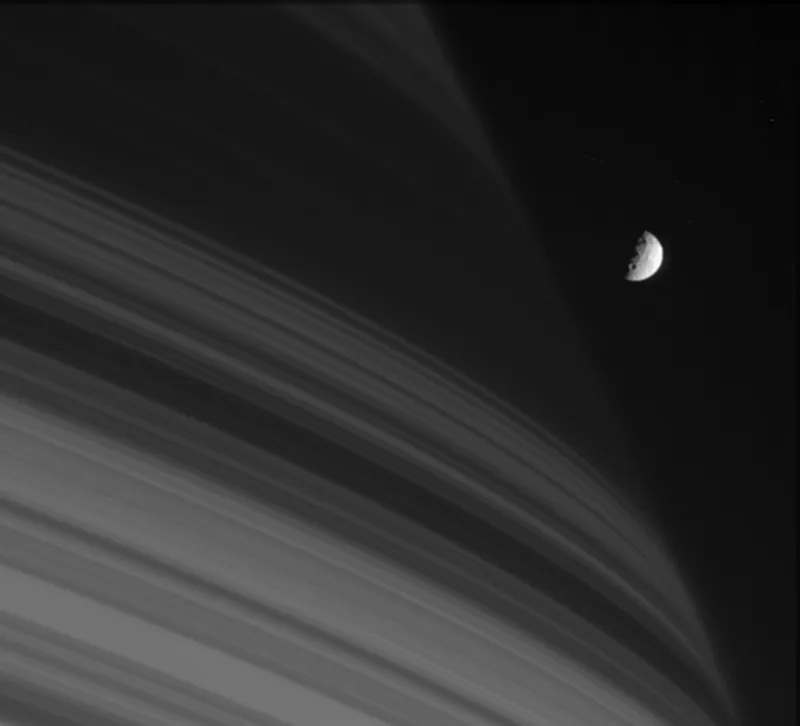
How does moon Mimas have a ‘young’ ocean?
We believe Mimas’s ocean may have formed in the last 25 million years.
Initially we believed the Saturn system formed at the same time as Saturn, around 4.5 billion years ago.
When suggesting the formation of an ocean moon so late in the Solar System, you need to have a strong argument to explain why it’s happening now.
The answer comes down to strong tides on Saturn, and the youthfulness of Saturn’s rings, which were recently suggested to be 100 to 200 million years old.
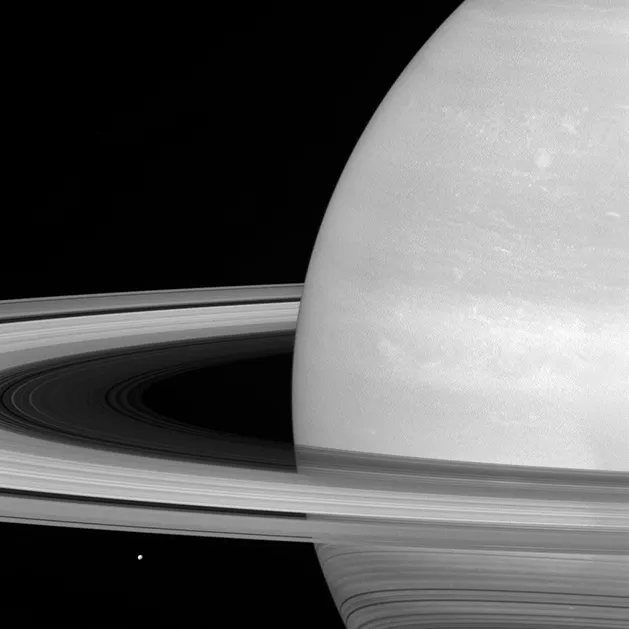
Is Mimas a good place to look for signs of life?
It is a good place for interesting chemistry.
At Mimas’s seafloor, where you have liquid water in contact with silicates in the moon’s rocky core, the temperature will also be relatively warm.
This is possibly the youngest place in the Solar System that could be habitable.
It is also possible that Mimas could be the product of former, bigger moons.
You may then have compounds in Mimas’s ocean that are more evolved because of what happened in these former generations.
That is a completely open question, meaning that Mimas is a very different type of object.
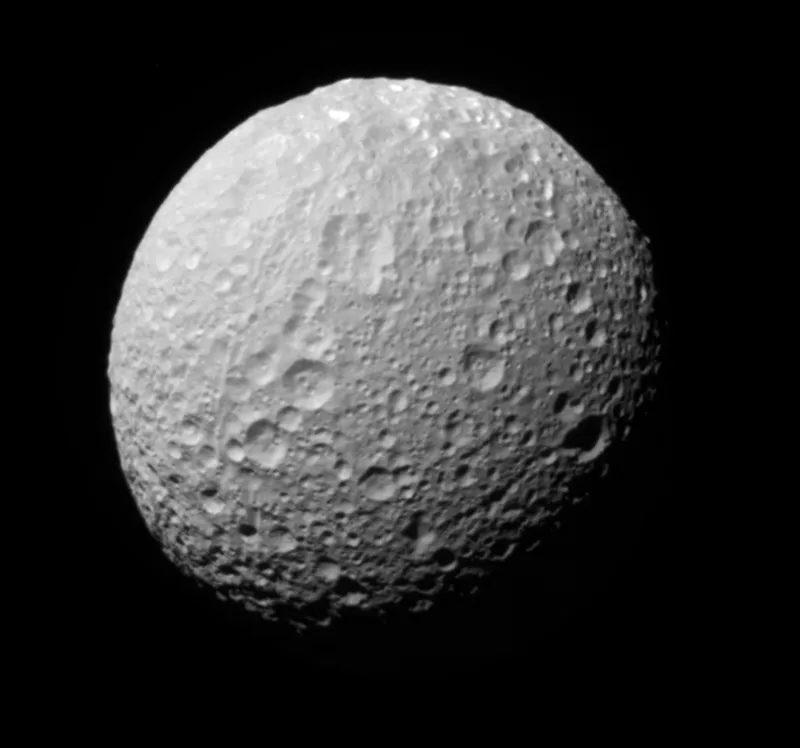
What’s next for your team?
It would be interesting to know the fate of the ocean. Will it freeze eventually? Or get excited again?
We would also like to better know the thickness of the icy shell and the temperature at the sea floor.
For this, we need to know more about the processes in Mimas’s core.
We also want to learn more about Mimas’s interaction with Saturn’s other moons, which will have caused it to heat in the last 25 million years.
We know that these interactions are what caused the heating, but we don’t yet know which moons were in play.
This interview appeared in the May 2024 issue of BBC Sky at Night Magazine
